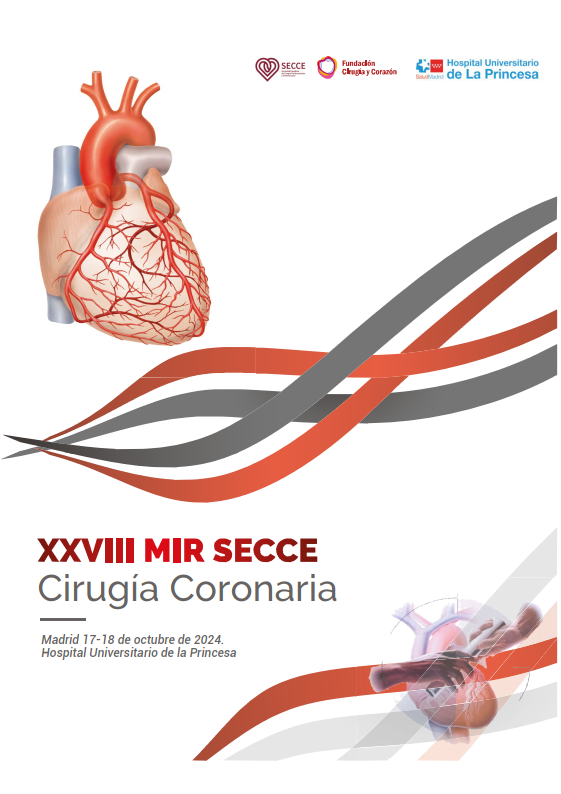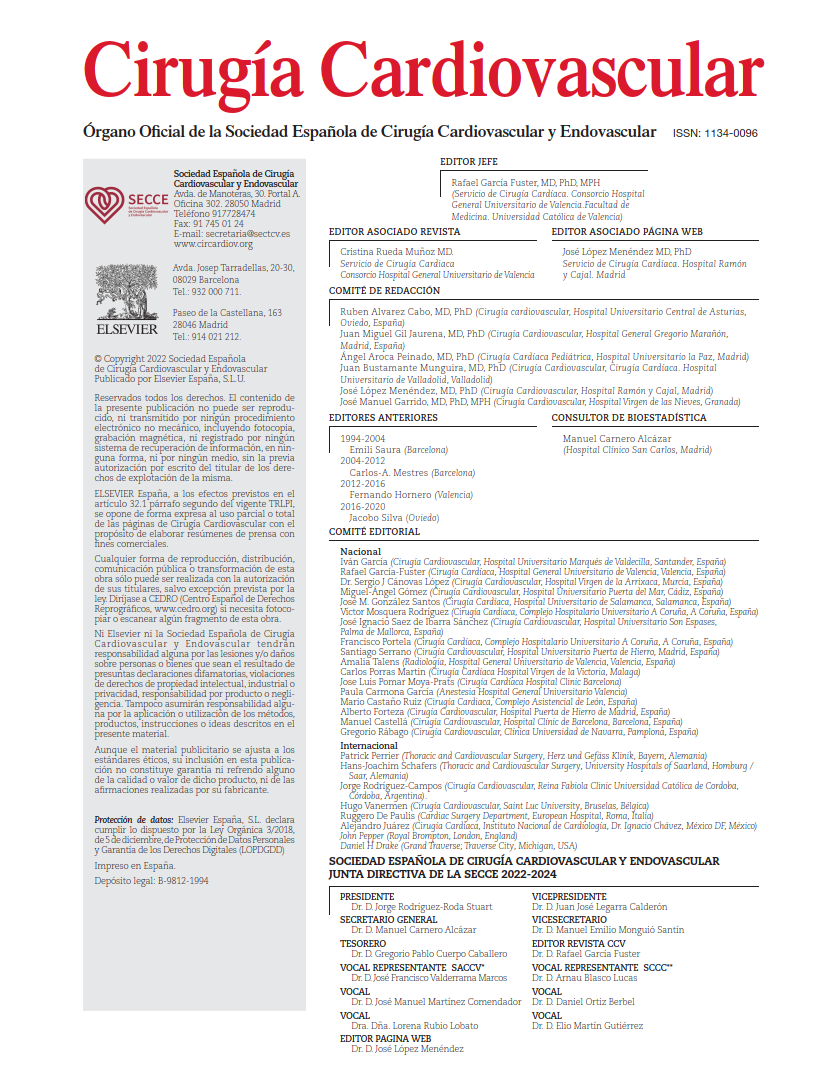The 2024 European guidelines on aortic disease recommend emergency surgery for acute type A dissection, even in the presence of neurological symptoms, as early treatment has been shown to improve the risk of cerebral malperfusion in many cases. This is the focus of the article under discussion, which reports the initial results of the PRESERVERE trial evaluating the AMDS aortic prosthesis.
The study presents the early outcomes of implanting the AMDS device in the aortic arch, combined with ascending aortic replacement with or without root replacement, performed using various techniques (supracoronary graft, Bentall–De Bono, or valve-sparing root repair) in 93 patients, with a median follow-up of 5.6 months (maximum 9 months).
For those unfamiliar, this novel hybrid prosthesis is designed for surgical implantation in type A dissection with cerebral malperfusion and a primary tear in zone 0. The device is an uncovered, surgically implanted prosthesis spanning the aortic arch and the proximal descending thoracic aorta. According to the authors, it is straightforward to implant, suitable for surgeons without extensive experience in arch surgery, and capable of improving flow in the supra-aortic trunks, while also promoting favorable aortic remodeling and minimizing the risk of new distal reentries.
The main indication, as already noted, is patients with type A dissection and clinical or radiological evidence of malperfusion involving the supra-aortic vessels, excluding those with multiple distal or arch reentries requiring more extensive repair. The procedure involves median sternotomy, cannulation for cardiopulmonary bypass, hypothermia, and circulatory arrest with the chosen cerebral perfusion strategy. The AMDS device is first implanted in an antegrade fashion under direct visualization of the true lumen, with the proximal edge sutured to the aorta by securing the prosthetic cuff to an external Teflon band. This cuff–Teflon band complex is then anastomosed to the Dacron graft of the ascending aorta.
Device selection is based on four available configurations, two straight and two tapered. Sizing requires two measurements: one between the brachiocephalic trunk and the left carotid artery (zone I), which should be between 20 and 45 mm, and another at the level of the pulmonary artery bifurcation to determine whether a straight or tapered prosthesis is appropriate.
The PRESERVERE study was a prospective, single-arm clinical trial (without a control group, results compared against five similar historical cohorts of patients with type A dissection and malperfusion who underwent standard surgery, typically hemiarch replacement). The protocol was designed for a total follow-up of 5 years. The article reports the early outcomes after a median follow-up of 5.6 months (maximum 9 months).
A total of 93 patients were included across 26 centers in the United States, with procedures performed by 34 implanting surgeons. Primary endpoints were the 30-day rate of major adverse events (all-cause mortality, new disabling stroke, renal failure requiring dialysis, and new myocardial infarction) and the occurrence of new distal reentries. Secondary endpoints included technical success, early aortic remodeling, unplanned aortic reoperations, device-related mechanical complications (migration, fracture, torsion), and cumulative mortality during follow-up.
Overall results were favorable for AMDS, with a 27% rate of major adverse events compared with 58% in the historical cohort. Positive aortic remodeling was observed in more than 80% of cases, with no evidence of new distal reentries. The authors concluded that this device is safe and effective, at least in the early follow-up, technically straightforward, and fast to implant. They emphasized its potential utility in patients with dissection and malperfusion who are poor candidates for complex arch repairs due to baseline status.
COMMENTARY:
This novel device is particularly noteworthy for several reasons. Most importantly, it offers a relatively simple solution to address cerebral malperfusion in patients with type A dissection by pressurizing the true lumen. Although spontaneous restoration of flow often occurs after closing the primary entry with a supracoronary graft, this prosthesis directly expands the true lumen and promotes false lumen thrombosis—two factors known to worsen prognosis even in surgical survivors. Remarkably, implantation proved technically straightforward (34 different surgeons with a 100% technical success rate), while requiring no additional anastomoses. The prosthesis remains a surgical implant but is compatible with subsequent endovascular extensions into the thoracic aorta.
Nevertheless, some important limitations must be acknowledged. The first is the absence of a formal control group for ethical reasons, with comparisons limited to historical controls—a design prone to bias. Furthermore, the current evidence is restricted to early outcomes, with a median follow-up of only 5.6 months for both safety and efficacy. Long-term data are essential to confirm durability and capture potential late complications.
Another concern involves unrecognized reentries within the arch—computed tomography may not identify all of them. Such reentries could dilate and destabilize the arch, precluding compatibility with total or partial endovascular arch repair (eg, Nexus, Endospan, Gore TBE). In two study cases requiring further intervention, frozen elephant trunk with debranching and TEVAR within the AMDS was feasible without explanting the device.
Malposition into the false lumen, although rare (one case in the study), remains possible despite the pig-tail–like distal end designed to minimize this risk. In these scenarios, the authors suggest the use of a guidewire, placed under TEE guidance or via a through-and-through femoral access in a hybrid operating room, to ensure accurate positioning. The guidewire must, however, be removed prior to device deployment.
As with other endovascular prostheses, AMDS is contraindicated in patients with connective tissue disorders and should not be oversized, nor is it advisable in dilated thoracic aortas. Intraoperative bleeding at the anastomosis appears minimal thanks to the Teflon band, with reinforcement stitches rarely needed.
Finally, malperfusion itself was not directly measured in trial outcomes, as no comparable data exist in other studies. Evaluation was therefore based on the absence of new cerebrovascular events and the presence of favorable early aortic remodeling.
In summary, this prosthesis merits close attention. It appears promising, technically feasible for most surgeons, and requires only a modest increase in operative time (median implantation time 15 minutes). While long-term results remain to be determined, early data suggest it could represent a valuable addition to the therapeutic armamentarium for carefully selected patients with type A dissection and arch malperfusion originating from an entry in the ascending aorta.
REFERENCE:
Szeto WY, Fukuhara S, Fleischman F, Sultan I, Brinkman W, Arnaoutakis G, et al. A novel hybrid prosthesis for open repair of acute DeBakey type I dissection with malperfusion: Early results from the PERSEVERE trial. J Thorac Cardiovasc Surg. 2025;170(1):114-23. doi:10.1016/j.jtcvs.2024.07.059.



